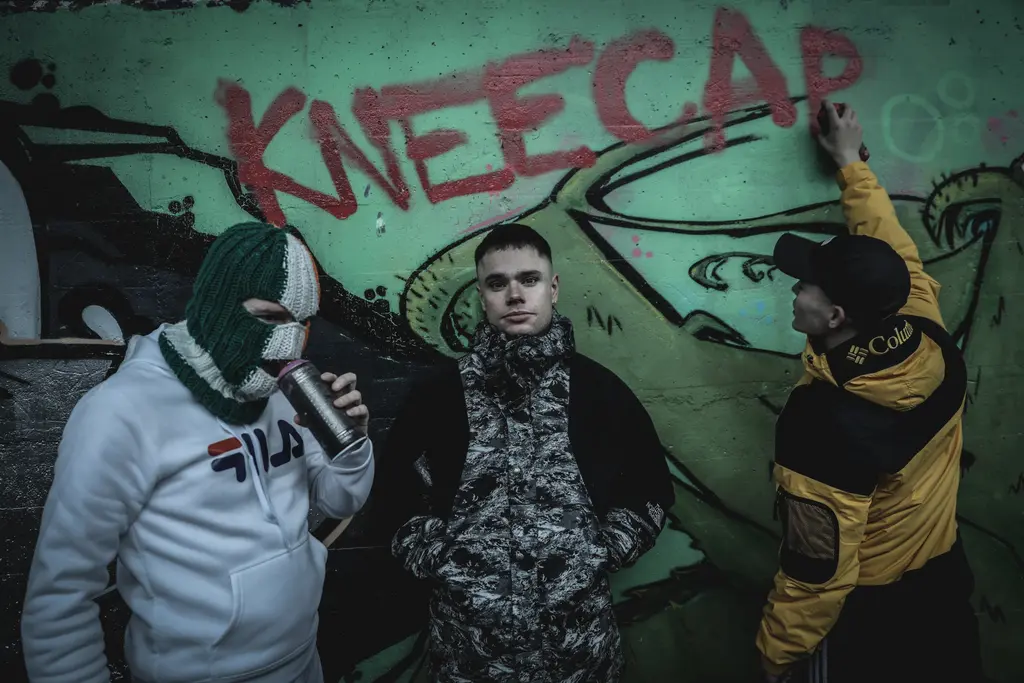A portrait of ’90s family life in the Midlands
- Text by Hannah Clugston
- Photography by Richard Billingham, courtesy of the Saatchi Gallery.

Imagine taking photographs of your home life only to feel too embarrassed to show them to your classmates and tutor. That was where photographer Richard Billingham found himself in the early ’90s, after he shot images of his alcoholic father and chain-smoking mother in their Cradley Heath council estate home.
On realising his fellow students were from slightly different backgrounds, he felt uncomfortable unveiling the realities of his unstable upbringing where his father had installed a bucket of alcohol next to his bed for ease of access.
Wonderfully for the world of photography, Billingham was persuaded to reveal his striking images that depict both the domesticity and the unpredictability of his family in intimate detail. The series of photographs, entitled Ray’s a Laugh after his father, captures the everyday goings-on in the Billingham household, recording meal times, relaxation, communication, babies and – in one bizarre incident – a cat being flung across the room.

Untitled (NRAL 6),1995

Untitled (RAL 33), 1990
Billingham’s decision to shoot on cheap film might have had an economic motivation, but the slight blur and high contrast on the final images are reminiscent of many family photo albums, reminding the viewer of the personal connection between artist and subject.
Although he initially shot the photographs as subject matter for his paintings, Billingham found that the images enabled him to understand his family and upbringing with more clarity. Consequently, he felt able to distribute them within the art world, exposing what poverty looks like for many and pioneering the term “squalid realism.” In 1997, the series was exhibited in Saatchi Gallery’s Young British Artists exhibition Sensation.

Untitled (NRAL 13),1996

Untitled (RAL 25),1994
Ray’s a Laugh returns to Saatchi Gallery this week for Black Mirror: Art as Social Satire. Billingham’s insightful snapshots will be joined by work from 25 other artists, including John Stezaker, Bedwyr Williams and Des Hughes, to explore how political uncertainty has influenced contemporary art.
Billinghams’ photographs are as relevant now as they were 25 years ago. Curator and director of Saatchi Gallery, Philippa Adams, notes: “They’re indicative of their time, but also a stark reminder that class disparity and poverty are very much in existence today.”
“Richard more recently has been photographing people living on the streets, which again reminds us that such desperately wrecked family lives are just as true today – if not more so when you consider the number of homeless on our streets. It forces the viewer to confront one’s own reality, the society we live in, and the inequality that still exists.”

Untitled (NRAL 17),1994
Black Mirror: Art as Social Satire runs at Saatchi Gallery, London, September 28 – January 13, 2019.
Follow Hannah Clugston on Twitter.
Enjoyed this article? Like Huck on Facebook or follow us on Twitter.
Latest on Huck

Inside Kashmir’s growing youth tattoo movement
Catharsis in ink — Despite being forbidden under Islam, a wave of tattoo shops are springing up in India-administered Kashmir. Saqib Mugloo spoke to those on both ends of the needle.
Written by: Saqib Mugloo

The forgotten women’s football film banned in Brazil
Onda Nova — With cross-dressing footballers, lesbian sex and the dawn of women’s football, the cult movie was first released in 1983, before being censored by the country’s military dictatorship. Now restored and re-released, it’s being shown in London at this year’s BFI Flare film festival.
Written by: Jake Hall

In the dressing room with the 20th century’s greatest musicians
Backstage 1977-2000 — As a photographer for NME, David Corio spent two decades lounging behind the scenes with the world’s biggest music stars. A new photobook revisits his archive of candid portraits.
Written by: Miss Rosen

In Queens, local surfers are moulding a neighbourhood in their own renegade images
Rockaway breaks — On a little-known stretch of beach in eastern New York City, an ecosystem of wave catchers, and the local bars and restaurants that fuel them, is seeing a boom. Paolo Bicchieri meets the residents and business owners behind the growing swell.
Written by: Paolo Bicchieri

Kneecap describe atrocities in Gaza as “medieval type slaughter” after breaking of ceasefire
Saoirse Don Phalaistín — The Irish rap trio took to X yesterday to criticise the “US-backed” Israeli authorities.
Written by: Isaac Muk

Capturing joy and resilience in Istanbul through tumultuous times
Flowers in Concrete — As protests break out across Istanbul, photographer Sıla Yalazan reflects on the 2013 Gezi Park movement, and capturing beauty as the city has undergone economic change and political tension.
Written by: Isaac Muk